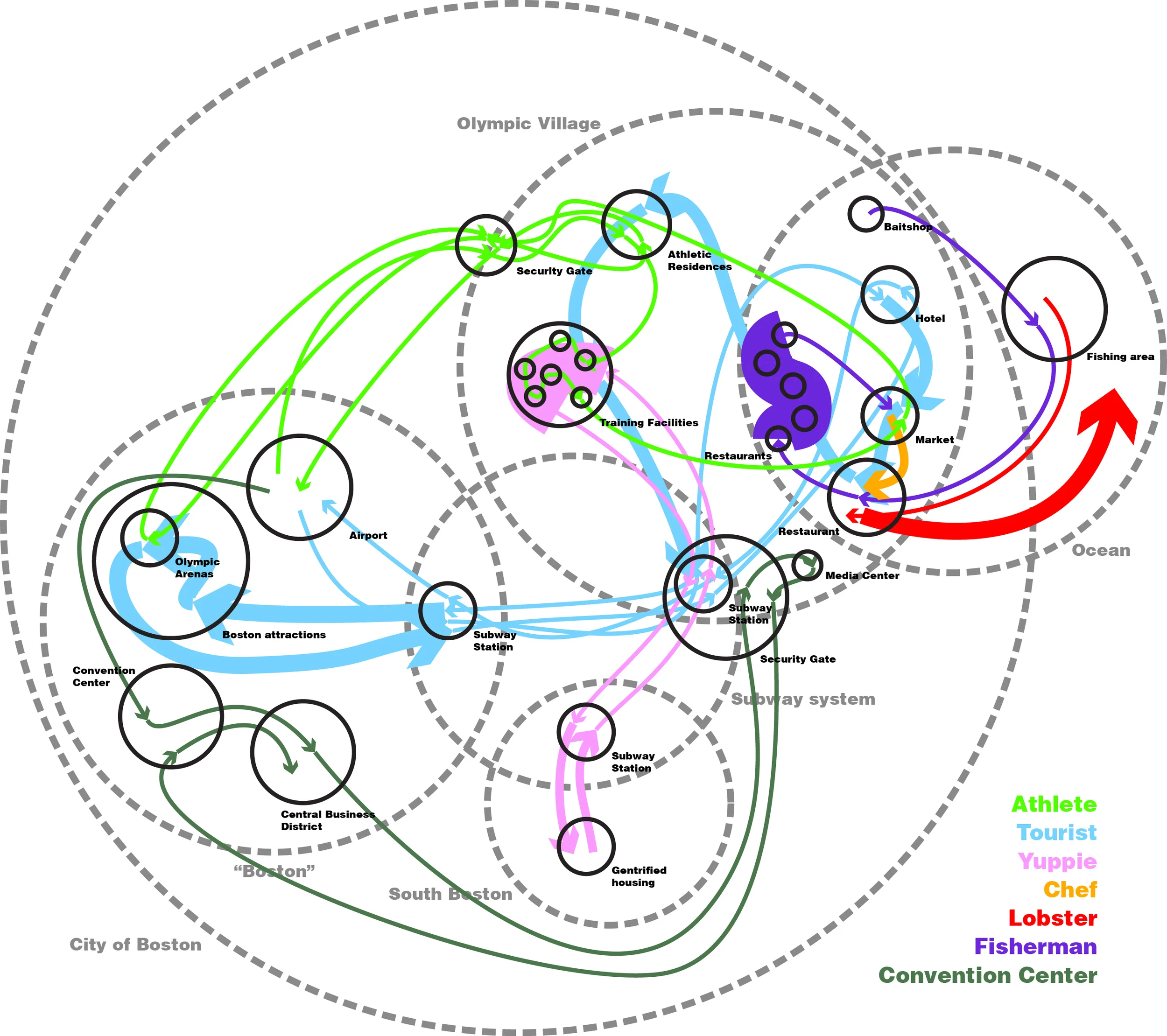Narratives through Boston:
Decoding the city as a set of character narratives
Composite character narrative map of Boston
As part of a continuing research project in developing a new image of the city through video game design theory, the city of Boston is decoded as an application of the theory. Four intersecting and layered narratives in Boston are defined and tested based on the new elements of the city: playable character, non-playable character, choreographed path, tutorial/orientation, checkpoint, super-goal, timeline, non-linear path, gimmick, difficulty, hyper-world, district, level/area, quest, obstacle, edge, landmark, event, community, place, presence, and score.
Each narrative is formed from the definition of a character. While in theory, characters are singularly defined with clear goals, in reality, each individual acts as many different "characters" in the city. This analysis attempts to isolate then integrate different character roles played by individuals.
Following the character, the hyper-world of the character is mapped onto the city of Boston. Each character hyper-world is defined as the world which is tailored to the character, and contains districts (neighborhoods), each containing levels (buildings or smaller areas of the city). The analysis creates a narrative through a number of levels and districts for each character through their own hyper-worlds as well as others, taking into account the choreographed and non-choreographed path, checkpoints, super-goal, timeline, edge, landmark, and community.
As the narratives become coded into the city, other character hyper-worlds are reintroduced to show the different adjacencies and overlaps between different characters and character worlds.
The character narratives are defined as follows: teenager (residential hyper-world), businessman (commercial hyper-world), shipping crate (industrial hyper-world), and biker (recreational hyper-world).
The lessons from this analysis were applied to the design of an athletic hyper-world in the design of an Olympic Village for Boston in 2024.
Full paper available upon request.
(In partnership with Tyler Pertman and Mahdi Sabbagh.)
(Research paper. Yale School of Architecture, M.Arch. Spring urban design studio 2014. Critic: Bimal Mendis.)
Composite character narratives and hyper-worlds map of Boston
Composite hyper-worlds map of Boston
Teenager (residential) narrative
Businessman (commercial) narrative
Shipping crate (industrial) narrative
Biker (recreational) narrative
Teenager (residential) narrative on hyper-world map of Boston
Businessman (commercial) narrative on hyper-world map of Boston
Shipping crate (industrial) narrative on hyper-world map of Boston
Biker (recreational) narrative on hyper-world map of Boston
Hypothetical character narrative diagram for an Olympic Village in Boston












